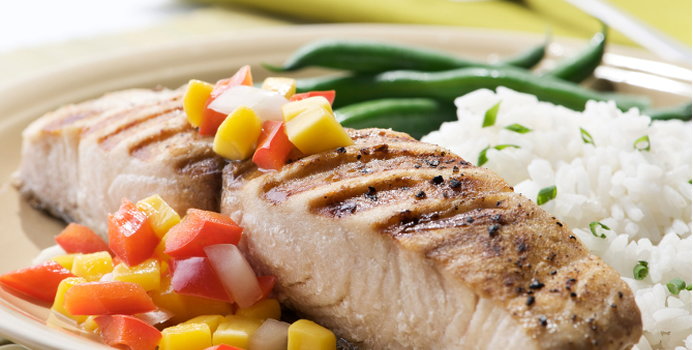Preparing meals with a good amount of essential nutrients is tough these days considering the time constraints from which we all suffer. There are several things to think about (quickly) as we rush to squeeze in a meal that is healthy and will provide us with sustenance and a feeling of satiety (without providing too many calories).
Macronutrients: Carbohydrate, Protein and Fat
What are the essentials of every meal? The basics are the 3 macronutrients:
- Carbohydrates
- Fats
- Proteins
Essential vitamins and minerals are in everything we consume; the trick is consuming the right things. Nutrients come in so many forms, so what's key is making sure we consume the correct balance of them (and do not leave ourselves hungry and dissatisfied).
Scientifically speaking, most of our nutrients and calories should come from carbohydrates (45-65 percent of them), as they are the primary source of energy for all body functions. Almost all essential vitamins and minerals come from carbohydrates. Proteins should provide 10-35 percent of our calories, and while fats should be used sparingly, it is essential to consume healthy fats each day (nuts, olive oil, avocados, etc.).
Maximize Vitamins and Minerals With a Colorful Plate
So what are some good ways to ensure our meals contain essential nutrients and vitamins? Think in colors. The more colors on a plate, the better. Each meal, especially lunch and dinner, should contain an abundance of leafy green vegetables, whole grains and fruits. Those should be accompanied by a reasonable serving of lean protein (around 5-6 oz.), and a healthy, unsaturated fat like almonds, avocado or olive oil.
A good example of a meal containing many essential nutrients and vitamins would be the following:
- 5-6 oz of lean protein such as grilled chicken breast, turkey breast, lean beef or steak trimmed of fat, whitefish, legumes, tofu or salmon
- Romaine lettuce and spinach (vitamin A, iron, potassium) salad with tomatoes (vitamin C) and 1-2 tablespoons of low or nonfat salad dressing.
- ½ a yam (potassium, fiber, vitamin B1 ) with a tsp. of olive oil (no trans fat), or light butter made from non-hydrogenated oils
- Strawberries (vitamin C, antioxidants) with sugar free pudding (usually about 60 calories)
This is a nutritionally complete, filling and colorful meal. There are a million possible combinations, but there are a few key things to remember. Again, the more colors the better. Your colors should come from fruits and vegetables (not starches).
Snack Ideas: Pair Essential Vitamins With Protein
Snacks are easy to prepare as well, and every snack should always be accompanied by protein. The following are some nutrient-filled snacks that will keep you satisfied in between meals:
- Low fat string cheese with one serving of fruit (one apple, strawberries, 1 small banana, 1 whole peach, etc.)
- Hard boiled egg with handful of baby carrots or one serving of fruit
- ½ Cup cottage cheese or low fat yogurt with 12 raw almonds
- ½ cup tuna salad with light mayo and a handful of baby carrots
Also, it's always good to start the day with a breakfast high in lean protein (ie., one whole egg + 3 egg whites). Simple carbohydrates like candy, sugars, soda, jellies and cakes and any and all fried foods should always be limited. The problem with these, and other starches like white breads and pasta, is that they are dense in calories and fat, low in nutrients, and they are not satisfying. The more of them we eat, the more we crave.
The best way to avoid the pitfalls of fried, sugary, starchy highs and lows is to plan meals and snacks, stick to the food pyramid and consume essential nutrients every time. There are no shortcuts.



